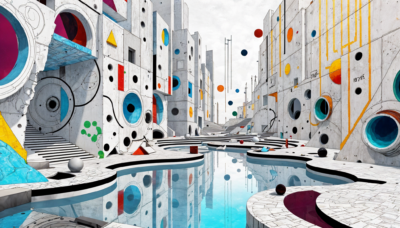The speed at which AI is changing our world can be a bit overwhelming and difficult to keep up with. Displacement is hitting everyone and the creative industry is not immune – its redefining how we ideate, produce, and connect with audiences. Automating repetitive tasks and unlocking entirely new forms of creativity, AI presents opportunities that are as exciting as they are challenging. For creative leaders, success in this new era requires more than just adopting AI—it means using it strategically to empower teams, drive innovation, and create meaningful, human-centered work.
Vision in the Age of AI
Leadership starts with having a vision, and in the age of AI, this means balancing technological possibilities with human storytelling and creativity. While AI can streamline workflows and provide data-driven insights, it’s up to leaders to ensure that creativity doesn’t lose its soul in the process or waste time focusing on the wrong outcomes. The best creativity emerges when artists are free from constraints, and this is where AI becomes a powerful ally.
A clear vision will help your team navigate the ever-expanding toolbox that AI offers. Whether it’s using AI to analyze audience behaviors or generate initial design drafts, leaders must understand and align these tools with overarching goals that resonate with audiences. As a friend and former colleague recently pointed out – “AI is like going from hand tools to power tools”. The power of AI is best realized when it amplifies the unique qualities of human creativity, more consistently turning good ideas into great ones.
Think of AI as a tool, not a replacement for your creativity.
Empowering Teams to Use AI
Think of AI as a tool, not a replacement for your creativity. One of the most critical roles of a creative leader today is fostering a culture where teams feel empowered to embrace AI. This begins with education—empowering team members to understand how AI can enhance their skills rather than replace them. It’s equally important for leaders to embrace a mindset of continuous learning, staying informed about AI advancements to guide their teams effectively.
Think about the batch process tool in Adobe Photoshop and how easy that may have made your life. By automating routine tasks like resizing graphics, sorting data, or drafting concepts, AI gives creatives more time to focus on what they do best: ideation and storytelling and honestly getting down to the “fun part”. Leaders should encourage experimentation – giving teams the freedom to test AI tools and integrate them into workflows at their own pace. Recognizing that everyone is at different levels of expertise, this approach not only deepens individual skills but also opens the door to discovering new opportunities and directions for innovation.
A creative leader’s role is also to help the team understand how to use AI responsibly. This also means addressing concerns about bias, originality, and ensuring that the use of AI aligns with the brand’s values and vision.
Adapting to AI’s Rapid Evolution
AI technology is evolving at an astonishing pace, and creative leaders must stay ahead of the curve to remain effective. Adaptability is no longer optional—it’s required. Leaders must be curious, proactive, and open to change, constantly exploring new tools and techniques to see how they can enhance team capabilities.
- Bring AI into the conversation: Set aside time in team meetings or create workshops focused on sharing AI-related tools and experiences. Encourage team members to showcase what they’ve tried, what worked, and what didn’t, fostering a collaborative learning environment.
- Create a Collaborative Resource Hub: Set up a shared space (shared document, Figma project, Slack channel, etc.) where your team can document and discuss AI tools they’ve explored, including tips, challenges, and creative use cases.
- Initiate “AI Exploration Challenges”: Encourage experimentation by setting up small, low-stakes challenges where team members can test AI tools in new ways. Reward creativity and share outcomes to inspire others to try different approaches.
Building a culture of adaptability starts with embracing a mindset of experimentation and collaboration. Leaders should encourage teams to try new AI-powered platforms and workflows, even if they’re unfamiliar or untested. The willingness to iterate and refine ideas based on what works is what will set successful leaders apart in today’s fast-moving landscape.
At the same time, leaders need to be discerning about which AI tools truly add value. Not every trend will align with a team’s goals or enhance the creative process. By staying focused on the big picture, creative leaders can make informed decisions about where to invest time and resources.
Leading Creatively in the AI Era
The rise of AI doesn’t mean the end of human creativity; it’s an opportunity to amplify it. Leaders who succeed in this landscape will be those who can inspire their teams to see AI as an ally, not as a threat. By aligning technology with storytelling and creativity, empowering teams to experiment and learn, and adapting to constant change, creative leaders can harness AI’s potential to create work that’s not just innovative, but meaningful.
The AI revolution is only just beginning and expectations will keep evolving. Creative leadership will continue to play a vital role in bridging the gap between comprehension and clear, effective communication. Success will lie in striking the perfect balance—harnessing AI’s capabilities while amplifying the uniquely human elements of creativity. As the creative landscape continues to shift, I’m eager to delve deeper into this intersection and share valuable insights along the way.
The image in this post was created using AI.



